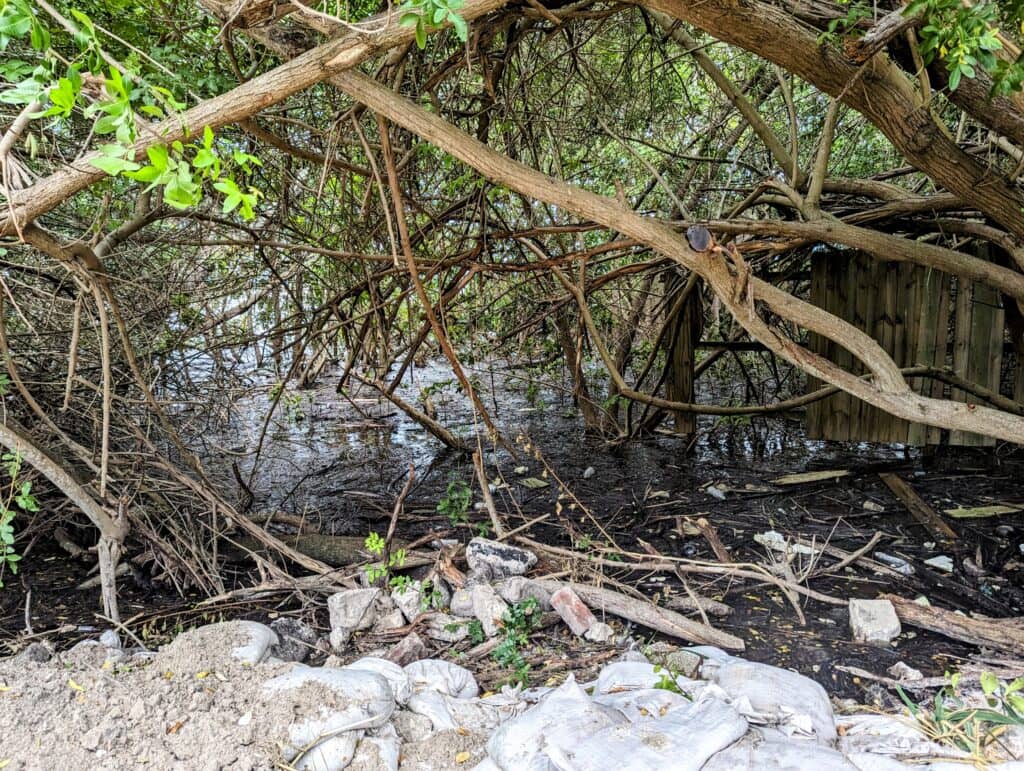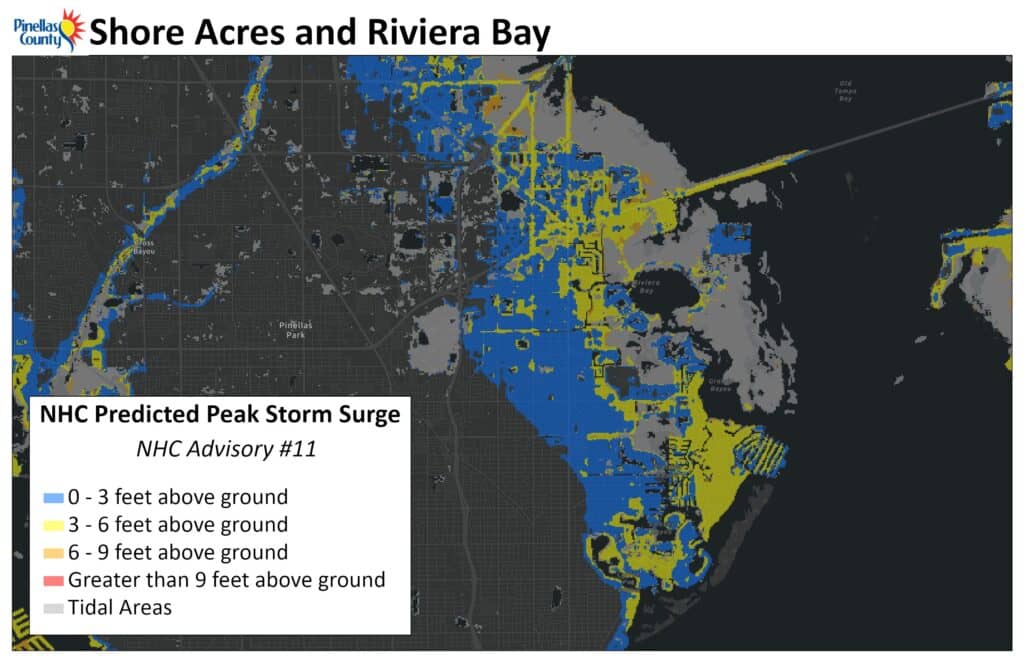Sewage leak site should remain safe through storm

St. Petersburg’s public works department is preparing for a hurricane a week after clamping a pipe that leaked about 10,600 gallons of raw sewage into a flood-prone area.
At a Tuesday morning press conference, Mayor Ken Welch noted that crews lowered lake and pond levels where possible to prepare for Hurricane Idalia. Forecasters expect the storm to bring several inches of rain and a four-to-seven-foot storm surge to the area Tuesday night and Wednesday morning.
Claude Tankersley, public works administrator, said his team also checked storm grates and pipes known to collect debris and clog. However, a pit dug to capture untreated sewage from a broken force main in Riviera Bay is already dry and covered.
“We are confident that the storm and the storm surge will not impact this pipe,” Tankersley told the Catalyst. “Now, there is always the chance that the pipe might break again on its own. But we believe that’s a small chance, given the fact that we did that condition assessment.”

A sandbag-lined pit that once kept raw sewage from entering the bay abuts the waterline Tuesday afternoon.
The problem began Aug. 18 when a homeowner noticed foul-smelling water seeping from the ground and spilling into the bay. City crews responded and vacuumed about 200 gallons of wastewater before it reached the waterway.
Another 600 gallons spilled overnight, and the leak grew exponentially Aug. 19 as crews attempted to repair the pipe. Approximately 10,000 additional gallons of sewage entered the bay, which borders the Weedon Island Preserve.
City workers dug a sandbag-lined pit to capture the wastewater as it leaked. They used vacuum trucks to remove the sewage and transport it to wastewater facilities for treatment.
The public works department clamped the pipe and stopped the leak by Aug. 21. Extensive testing showed that once-elevated bacteria levels returned to acceptable limits Aug. 23.
Welch declared a Local State of Emergency ahead of Hurricane Idalia five days later. Tankersley explained why he remains unconcerned.
“The pipe is buried underground, and we’ve closed the pit back up,” he said. “Because the groundwater in that area is so high anyway, the pipe is constantly submerged in groundwater as it is.
“The pipe is carrying sewage collected from north of Gandy Boulevard. So, the storm surge should not affect the flow of sewage through the pipe, nor should it affect the condition of the pipe itself.”

A National Hurricane Center map showing predicted peak storm surge impacts around Riviera Bay, as of Tuesday afternoon. Image: Pinellas County Government.
City crews realized the mile-long, 24-inch force main was unsalvageable. They are now accelerating efforts to implement a bypass pipe.
Tankersley said it would take at least a month to get it in the ground due to its size and length. However, he noted that independent metallurgists and engineers studied the outdated pipe to determine the likelihood of another break.
Tankersley said they “found nothing to indicate that the pipe is in any danger of breaking again.” In addition, workers cleared the pit and left it open to observe any leakage as they brought the force main back online.
“And we found that there was no leakage from the clamp – at all,” Tankersley added. “So, we felt comfortable that the clamp is holding things in place, it’s prevented the leak, and it’s buying some time to get the bypass pump in.”
While storm surge and rainfall do not affect pressurized pipes like the one that broke, he said the thousands of miles of gravity-fed sewer and stormwater lines can become inundated. Tankersley asked residents to avoid non-essential water use until Hurricane Idalia passes.
There is also a silver lining to receiving severe – but not catastrophic – weather. Tankersley said, “Yes, absolutely,” when asked if heavy rains and exceptionally high tides help stormwater officials identify problem areas.
He called it a blessing to have concerned citizens who send in photos of areas that flood during storms, regardless of whether it is from a named tropical system or a typical summer downpour.
“And we use that information that they send us to help assess which of our stormwater pipes might be undersized, or which of our stormwater pipes might have a clog in it, that we need to go out and remove …,” Tankersley added. “So, this does help us.”








De Morris
August 30, 2023at3:42 am
My main concern:
Is our drinking water safe or is the damage already done?